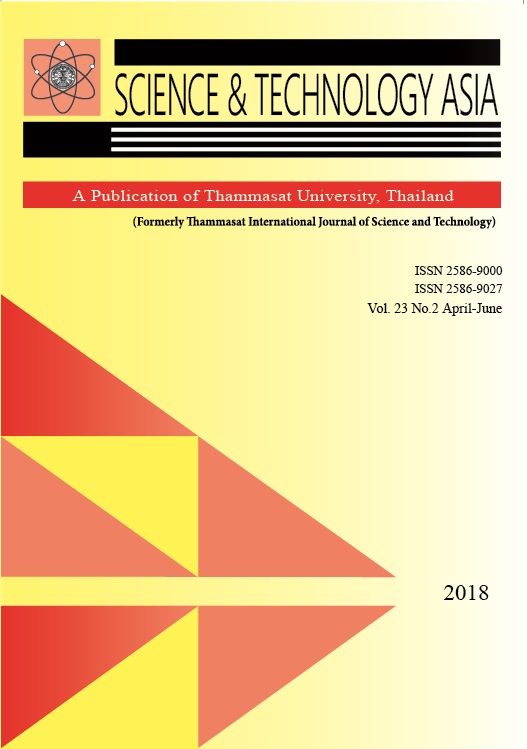Effects of Intercropping of Marigold and Yardlong Bean on Population of Cowpea Aphid, Aphis Craccivora Koch
Main Article Content
Abstract
The experimental field was planted at Pathum Thani Province to assess the effects of marigold and yardlong bean intercropping on a number of cowpea aphids, a number of natural enemies, growth and yield of yardlong bean and insect bio-diversity. The experimental design was a randomized complete block design (RCBD) with four treatments each of which was replicated three times. Each of the 12 plots measured 7 m x 5 m in the experiment. The distance between inter and intra row spacing for all treatments was 70 x 50 cm with 1 m spacing between plots. The intercropping treatments were: sole yardlong bean (T1), 1 row of yardlong bean with 1 row of marigold (T2), 2 rows of yardlong bean with 1 row of marigold (T3) and 3 rows of yardlong bean with 1 row of marigold (T4). The results showed that intercropping yardlong bean with marigold had significant (p<0.05) effect on the number of cowpea aphids, the number of natural enemies, growth and yield of yardlong bean and insect bio-diversity when compared with the sole yardlong bean. The 1 row yardlong bean + 1 row marigold had the lowest number of cowpea aphids from week1 to week6 when compared with other intercropping. The 1 row yardlong bean + 1 row marigold were value with 26.32+1.24, 42.00+0.61, 65.33+1.69, 70.33+1.69, 110.66+1.24 and 145.00+1.63 aphids/ 5 yardlong, ladybird beetles (34.60 + 1.24), black ant (30.80 + 1.24) and spider (17.33 + 0.94), plant height and weight (42.25 + 0.82 cm and 2.75 + 0.82 kg) and insect bio-diversity (1.44). Therefore, intercropping yardlong bean with marigold is an effective practice in the control of cowpea aphids and enhancing insect bio-diversity.


